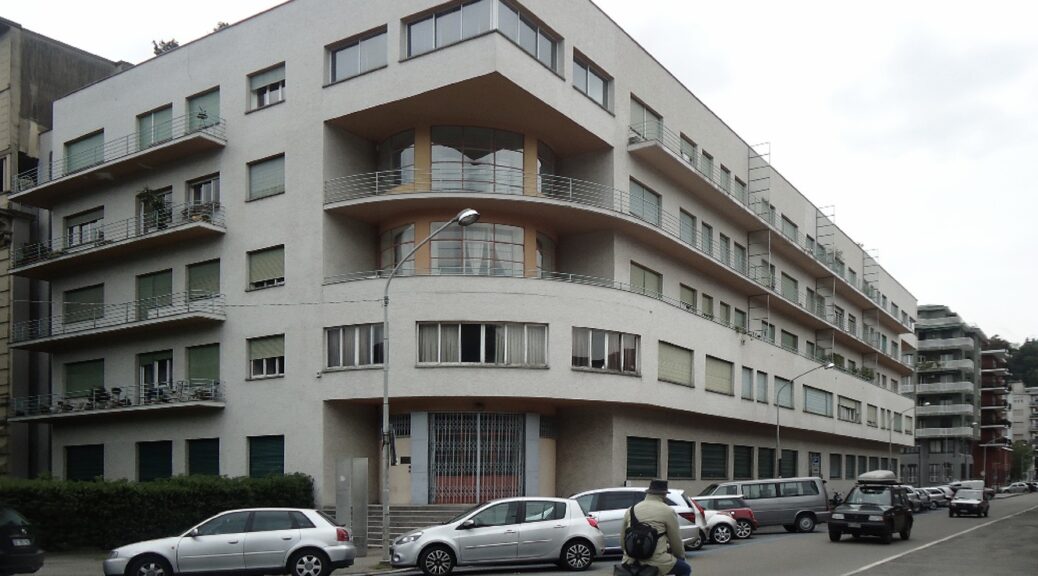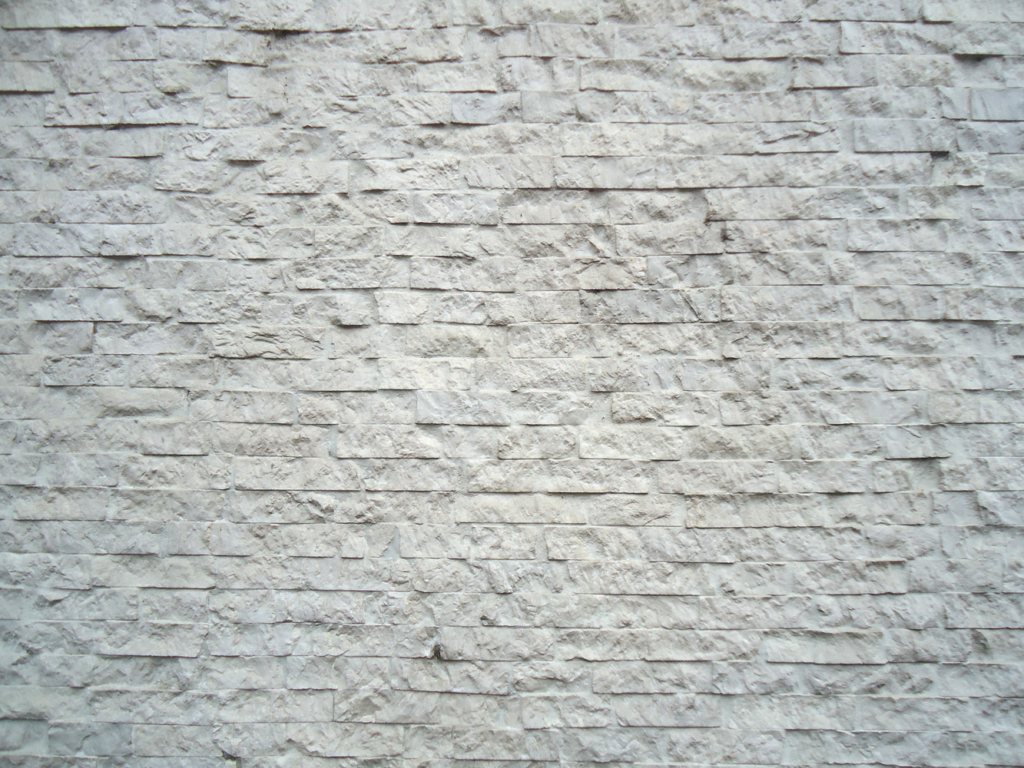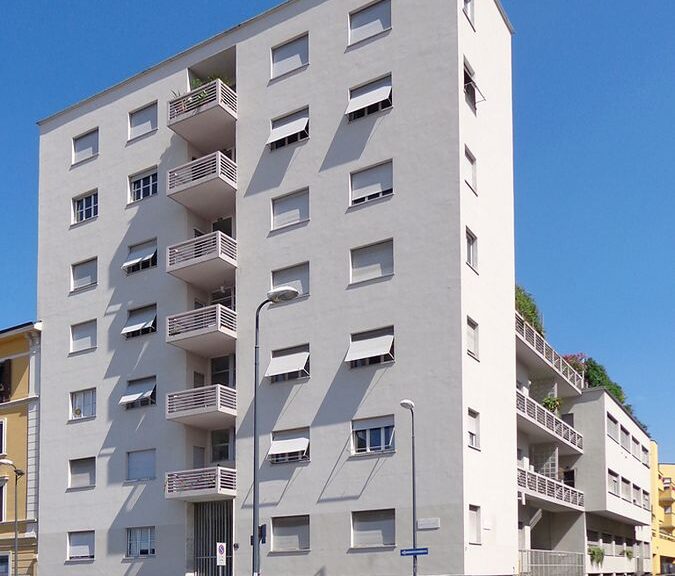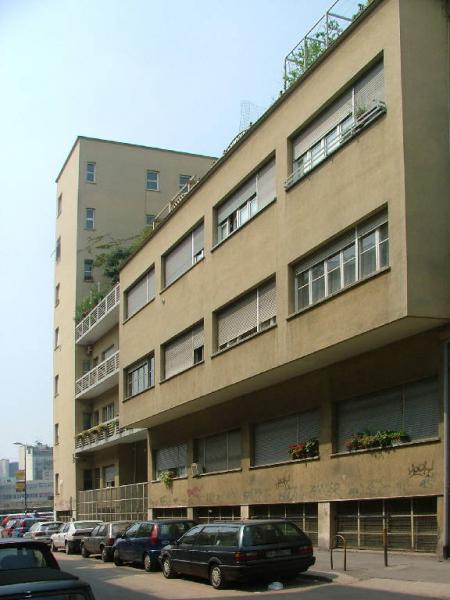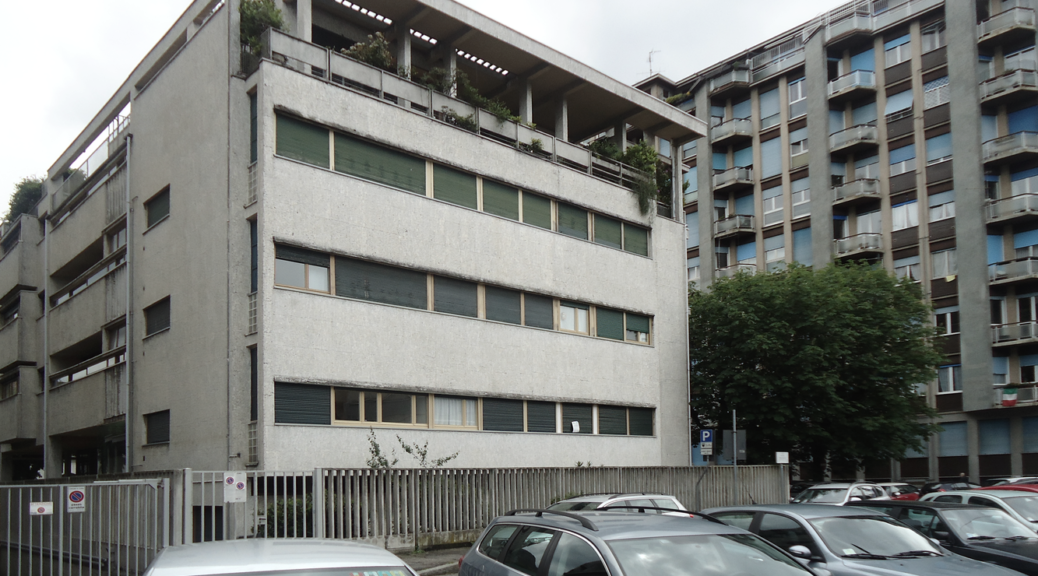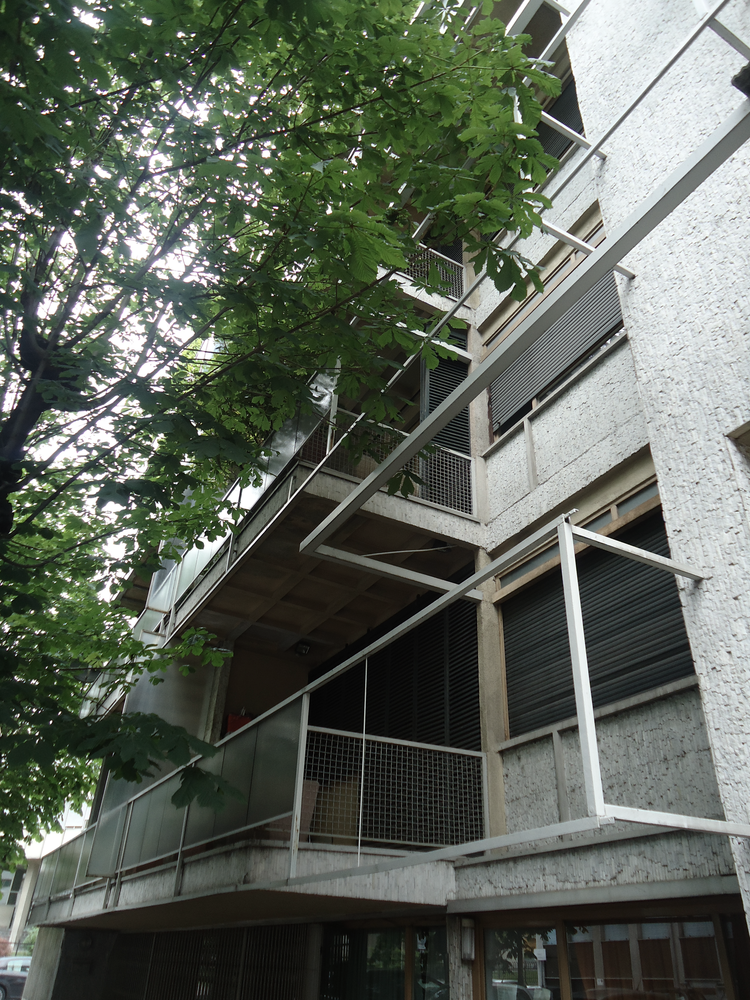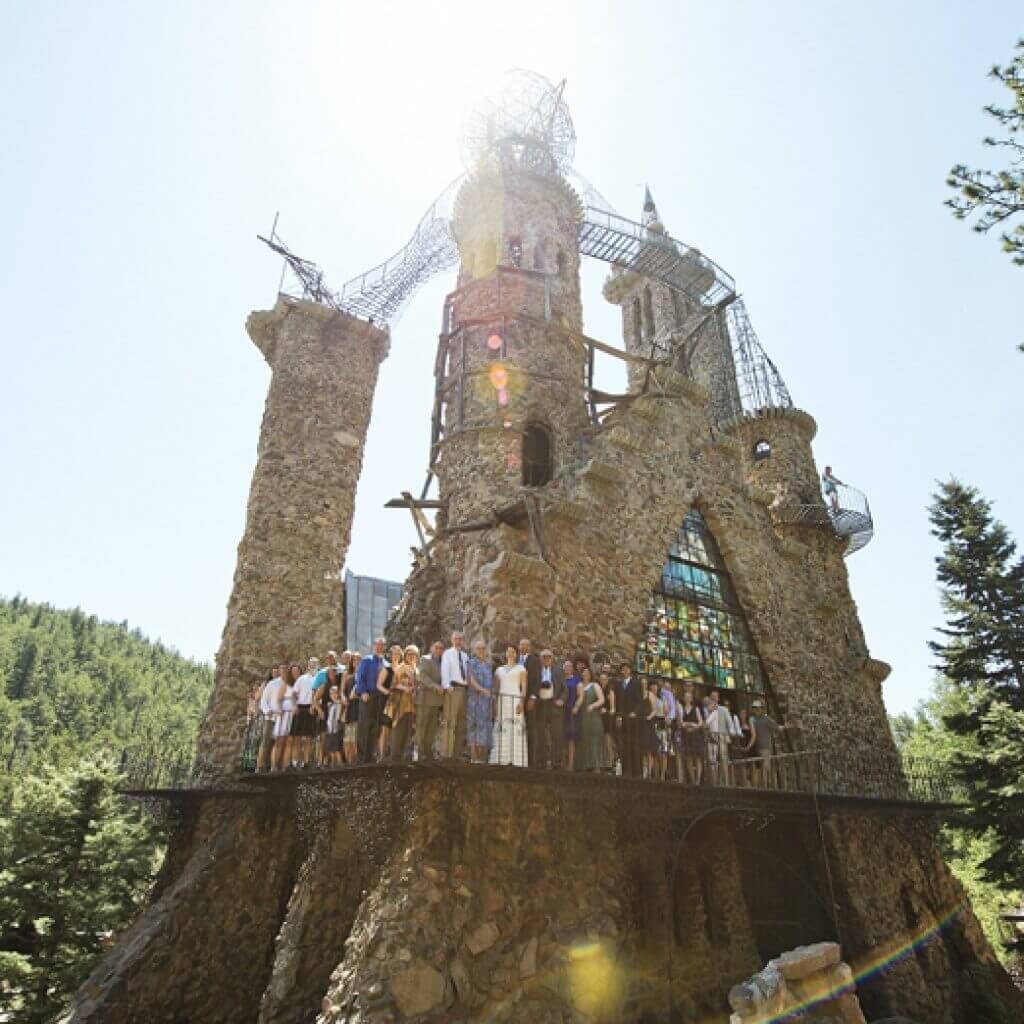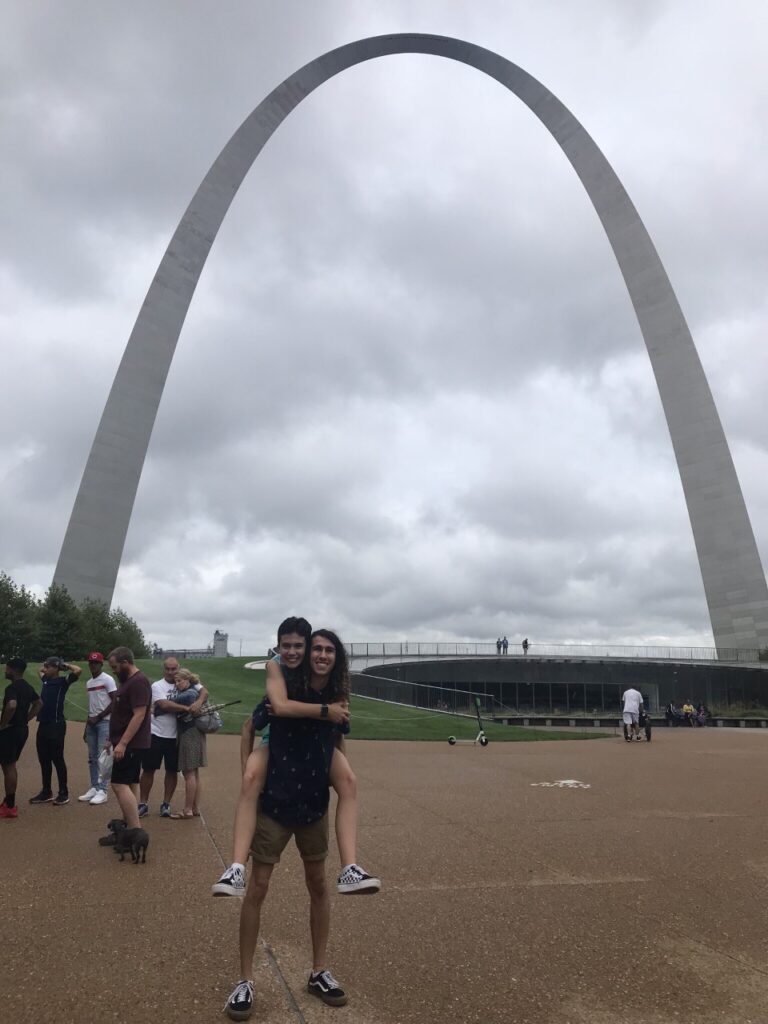Giuseppe Terragni’s Novocomum was a bold career move. The housing complex was commissioned to have a classical facade to fit in with the residential buildings of the time, but Terragni changed his initial designs after approval so that during construction the building took a much different form. The Novocomum that stands today is regarded as an icon of Rationalist architecture in Italy but at the time Terragni’s change in plans was considered for demolition. However, the unprecedented design of pure, clean, and expressive features grew on the public. Novocomum is made up of simple volumes that interpenetrate with each other which highlight the subtle color contrasts.
The building’s exterior is mainly composed of the white stone tesserae shown above. This textured but clean face is contrasted by the hazelnut plaster exposed by the cutout. The main feature of Novocomum is its cylindrical entrance that is revealed by the cutout as well. The top floor is left suspended over this feature which adds to its impact. Terragni made a risky choice with Novocomum but it clearly was worth it.
Images retrieved from:
José Tomás Franco’s gallery
